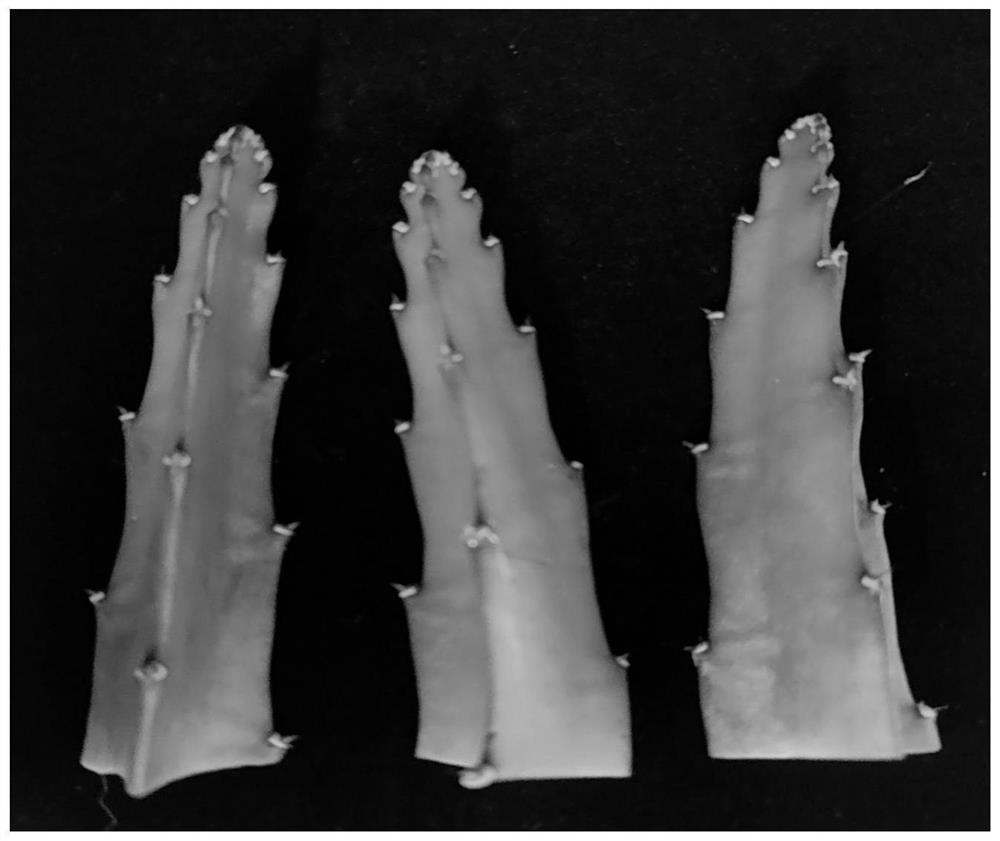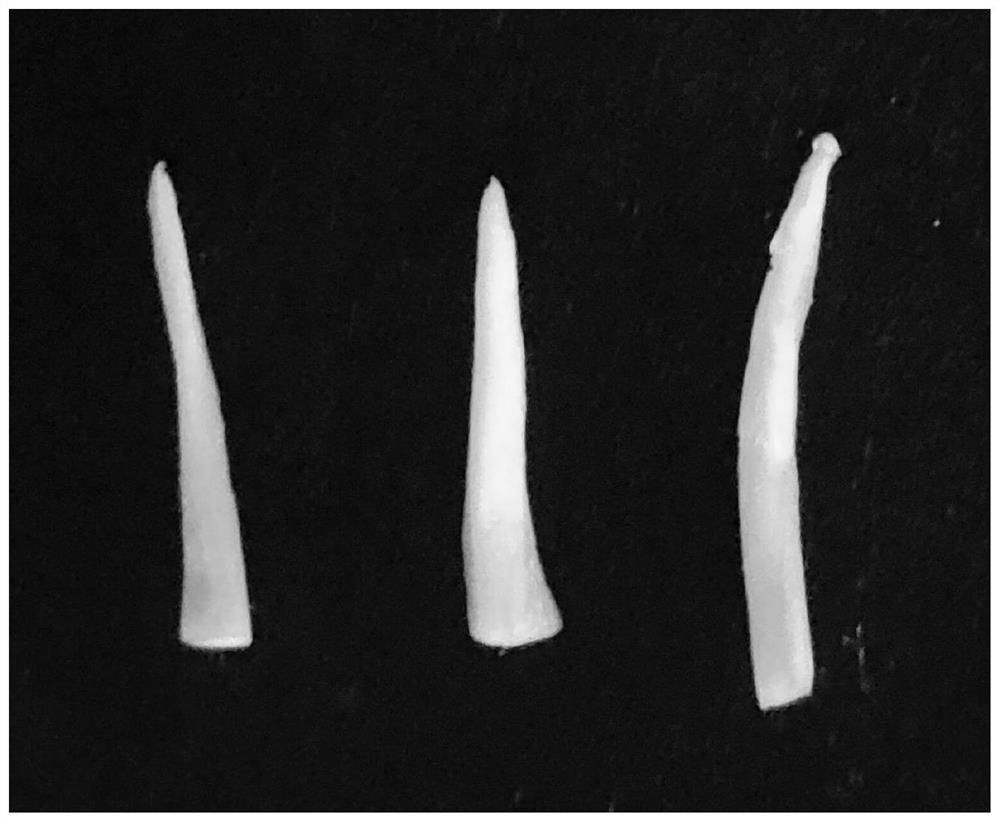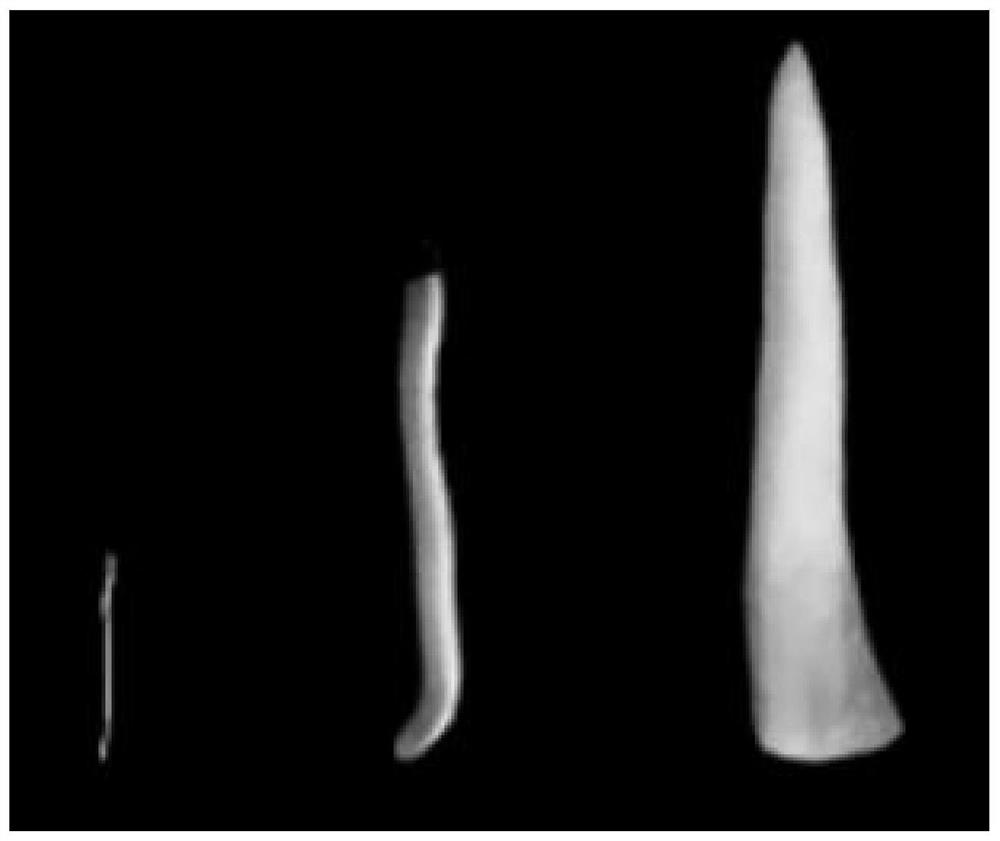Chromosome and karyotype analysis method taking pitaya stem tip as material
A technology for dragon fruit stem and karyotype analysis, which is applied in the research field of plant cytology and cytogenetics, and can solve problems such as troublesome root tip sampling, unstable growth of dragon fruit, and difficulty in obtaining materials
- Summary
- Abstract
- Description
- Claims
- Application Information
AI Technical Summary
Problems solved by technology
Method used
Image
Examples
Embodiment 1
[0044] Embodiment 1 chooses the pitaya stem tip as the experimental material, and the specific operation steps are as follows:
[0045] Step 1: Obtaining materials and preprocessing
[0046] Choose healthy, young and tender dragon fruit stem tips, and dissect it to obtain the dragon fruit plant central stem tip.
[0047] Step 2: Concentrate
[0048] Put the dissected dragon fruit stem tip into a mixture of 0.2% colchicine and 0.002M 8-hydroxyquinoline, and place it at room temperature for 2 hours.
[0049] Step 3: Pre-hypotonic
[0050] The concentrated stem tip is soaked at normal temperature with 0.075M KCl.
[0051] Step 4: Front Fixation
[0052] Put the shoot tip into Carnot's fixative solution (absolute ethanol: glacial acetic acid = 3:1), and place it in a refrigerator at 4°C for more than 4 hours.
[0053] Step 5: Dissociation
[0054] Put the shoot tips after washing off Carnoy's fixative into 1M HCl for dissociation.
[0055] Step 6: Enzymatic Digestion
[00...
Embodiment 2
[0090] Example 2 Select 'Bairou' and 'Jindu No. 1' as the experimental materials of this experimental example, and the specific operations are as follows: Step 1: Take materials, pretreatment
[0091] Choose healthy, young and tender dragon fruit stem tips, and dissect it to obtain the dragon fruit plant central stem tip.
[0092] Step 2: Concentrate
[0093] Put the dissected dragon fruit stem tip into a mixture of 0.2% colchicine and 0.002M 8-hydroxyquinoline, and place it at room temperature for 2 hours.
[0094] Step 3: Pre-hypotonic
[0095] The concentrated shoot tips were soaked with 0.075M KCl at room temperature for 120min.
[0096] Step 4: Front Fixation
[0097] Put the shoot tip into Carnot's fixative solution (absolute ethanol: glacial acetic acid = 3:1), and place it in a refrigerator at 4°C for more than 4 hours.
[0098] Step 5: Dissociation
[0099] Put the shoot tip after washing off Carnot's fixative into 1M HCl, and dissociate at room temperature for 9...
PUM
 Login to View More
Login to View More Abstract
Description
Claims
Application Information
 Login to View More
Login to View More - R&D
- Intellectual Property
- Life Sciences
- Materials
- Tech Scout
- Unparalleled Data Quality
- Higher Quality Content
- 60% Fewer Hallucinations
Browse by: Latest US Patents, China's latest patents, Technical Efficacy Thesaurus, Application Domain, Technology Topic, Popular Technical Reports.
© 2025 PatSnap. All rights reserved.Legal|Privacy policy|Modern Slavery Act Transparency Statement|Sitemap|About US| Contact US: help@patsnap.com



